Winners of the 2013 Auroralia Award announced!
The winners of the Auroralia 2013 Award were announced at the prize ceremony organised by Schréder and LUCI in Lyon on the 7 December 2013 during the Lyon Light Festival.
The city of Nîmes (France) won the 1st prize, with Ibarra (Ecuador) and Durham (England) winning the 2nd and 3rd prizes respectively. The city of Heidelberg (Germany) was commended with a Special Mention.
Now in its 5th year, the Auroralia Award – organised jointly by LUCI and Schréder – received a record number of entries from around the world competing to promote the best sustainable urban lighting initiatives.
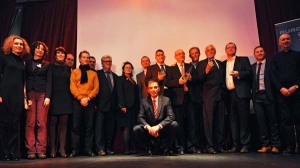
For this edition, an impressive 26 cities and towns from across the world submitted entries: Békéscsaba (Hungary), Brussels (Belgium), Bryansk (Russia), Cairo(Egypt), Chennai (India), Durham(England), Hamburg (Germany), Ibarra (Ecuador), Jyväskylä (Finland); Lisbon (Portugal), Los Angeles (USA), Lyon (France), Malaga (Spain), Marienhafe (Germany), Medellin (Colombia), Mostar ( Bosnia and Herzegovina), Nîmes (France), Oldenburg-Holstein (Germany), Passau (Germany), Pocking (Germany), Rio de Janeiro (Brazil), Sabadell (Spain), Setúbal (Portugal), Siófok (Hungary) and Tartu (Estonia).
The winners were chosen by a panel of judges from the specialised press which singled out projects that significantly minimize the environmental footprint while balancing performance and practicality with innovation and aesthetic rigour.
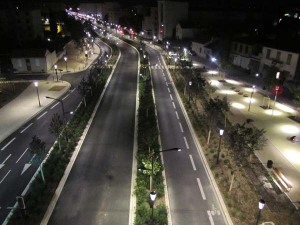
1st prize: Nîmes (France)
As part of its Urban Transport Scheme, the city of Nîmes and Nîmes Metropole are actively limiting traffic in the city centre by developing environmentally friendly and economical public transport services so that residents change their travel routines.A key project in this strategy was the implementation of a new bus service running from the city centre to the A54 motorway.
In collaboration with lighting designers from Côté Lumière, the different landscapes (new and existing) along this route were carefully analysed and a lighting plan was drawn up to provide a coherent and contrasting lighting solution providing safety and comfort. Pedestrian areas are lit with warm light for a welcoming ambiance while the roads are lit with a colder white light and luminaires at different heights. With more than 7,000 passengers daily, the new bus service has well and truly changed the lives of the residents.
The Auroralia jury were particularly impressed by this inspiring initiative to promote a more sustainable way of life by providing an enhanced experience of mobility through innovative street lighting. The new luminaires dramatically reduce the energy consumption compared to the old ones, (from 150W to 64W) and can be equipped with a remote management system in the future to reduce energy costs further!
2nd prize: Ibarra (Ecuador)
The local authorities of this popular tourist destination at the foot of the Imbabura Volcano believe that they have a responsibility to provide safe and livable outdoor spaces if they want to boost tourism, new businesses and other economic activities. In July 2011, they launched the development of Parque Bulevar Céntrica, a 240,000m² area dedicated to providing cultural, educational, sports, recreational, tourist and administrative activities.
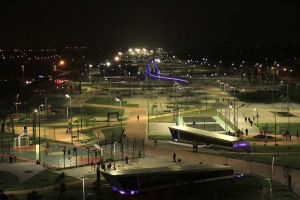
By converting the site of the former Ibarra city airport (120km from Quito) into this urban oasis with plenty of green spaces and recreational zones, they have succeeded in strengthening social interaction and encouraging a healthier lifestyle with a better quality of life for the local residents.
The authorities implemented the latest LED lighting solutions with a hydroelectric power supply to ensure an energy-efficient lighting solution with optimal colour rendering for excellent visual comfort and a sense of well-being. This careful selection of luminaires also means that the city has reduced its energy costs and CO2 emissions by 43% per year (340.000 kWh / 115.300 kg CO2).
By awarding the second prize to Ibarra, the jury wanted to highlight the positive impact of this project on the social, economic and environmental aspects of urban life.
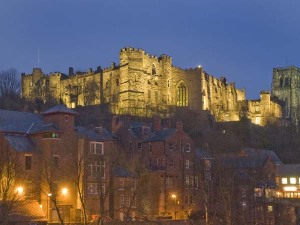
3rd prize: Durham (England)
Durham Castle and Cathedral are UNESCO World Heritage Sites and two of the most important historic buildings in the United Kingdom. In 2011, as part of a general renovation plan, a new lighting scheme was launched as the existing illumination system had reached the end of its serviceable life.
In collaboration with Stainton Lighting Design Services, a new lighting solution was implemented, designed to be energy efficient, ecological and enhance the magnificent architectural details and texture. The two monuments are lit by LED floodlights which were carefully selected to minimise energy consumption and maintenance costs. After consulting with local ecologists, it was decided that although certain areas would not be illuminated to preserve the roosts of the Pipistrelle bats living in the vicinity, an LED lighting solution with low or inexistent UV emissions was a wise choice. Likewise, the trees have not been illuminated. The two monuments are illuminated with different colour temperatures to create a contrast and can be dynamically lit for special events thanks to a DMX control system.
This regeneration project which has created a striking nocturnal feature in the city skyline while preserving the local wildlife was unanimously praised by the press. The Auroralia judges joined in this overwhelming support by awarding the third prize to this forward thinking city.
Special Mention: Heidelberg (Germany)
When the city of Heidelberg decided to regenerate an abandoned freight area into a high-tech campus, they launched one of Germany’s largest urban development projects based entirely on sustainable passive housing standards. The entire project including the lighting scheme integrates cutting edge technology to promote a sustainable way of life. LED luminaires equipped with a remote management system and motion detection have been installed for the upmost energy efficiency, generating 60% energy savings.
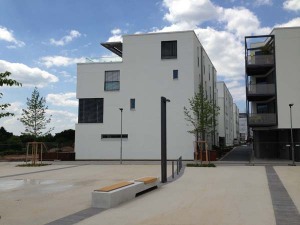
By awarding a special mention to this city, known as Germany’s “green capital”, the jury wanted to highlight their initiative as an excellent example to follow.

